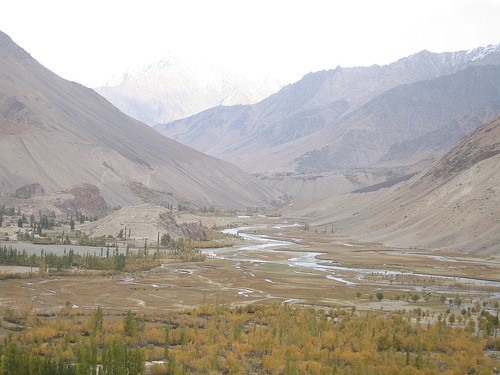Building back better after COVID-19: Pakistan’s Protected Areas Initiative
Protected and conserved areas have proved to be essential management tools for conserving biodiversity. They also contribute towards human wellbeing and sustainable development. The 2030 Agenda for Sustainable Development includes biodiversity considerations in over half of the Sustainable Development Goals. It also recognises that the only way to achieve economic and social development is through the sustainable management of natural resources.
The current COVID-19 pandemic has confirmed the critical link between healthy ecosystems and human health. The pandemic is having dramatic social and economic impacts at the global scale. We see these negative impacts in protected and conserved areas as well. For example, there are adverse impacts on management capacity, effectiveness financing and the livelihoods of communities living in and around these areas (Hockings et al. 2020).
As a response to current challenges, Pakistan has launched the post COVID-19 “Green Stimulus” Initiative aimed at protecting nature and creating job opportunities. The “Protected Areas Initiative” (PAI) announced by Imran Khan, the Prime Minister of Pakistan, is part of the “Green Stimulus” vision. The goal of this innovative initiative is to address two national challenges. First the need for effective governance and management mechanisms for all the “notified” protected areas (sites that were announced but never protected) in the country. Secondly the need to increase protected area coverage to ensure the conservation of biodiversity.
To achieve the above, the initiative has the following three objectives::
1. To expand protected area coverage to at least 15% of Pakistan’s area by 2023;
2. To effectively protect “notified” protected areas with proper management plans, legislative interventions and standardised eco-infrastructure designs;
3. To list at least seven leading national parks under the International Union for Conservation of Nature’s (IUCN) Green List of Protected and Conserved Areas.
This initiative was kick-started with the announcement of 15 new (or newly implemented) national parks, covering a land area of over 7,300 km2. Nine of these protected areas are recently declared national parks, while the remaining six were notified some time ago, and are now being protected. Pakistan recently announced two of these new national parks: the Himalayan National Park and Nanga Parbat National Park. These, along with a stream of other protected areas, now constitute a unique high-altitude “Nature Corridor”, all above heights of 10,000 feet (3,048 meters), creating a habitat for preserving iconic species such as the Snow Leopard, the Markhor and the Ladakh Urial.

Sheikh Badin National Park, one of the new and recently declared national parks as part of the PAI.
All 15 national parks will now become functional for the first time, with appropriate management and governance structures. The initiative will involve the development of management plans, dispersal of community-led conservation funds, and creation of the first institutional National Parks Service. It is expected that the initial phase of the PAI will create approximately 5,000 jobs for young people who will work (via the National Parks Service) as guardians and custodians of protected areas. It is also expected that the initiative will benefit the livelihoods of local communities through regulated eco-tourism in and around the national parks. The government has earmarked Rs4 billion (USD 24 million, approximately) to fund the initiative, with 92% of this allocated to job-creation and the improvement of livelihoods.
The Prime Minister Imran Khan, representing the developing countries as co-chair of the recent United Nations Summit on Biodiversity, signed up to the ambitious 30 by 30 target, which could see the PAI expand even more in Pakistan, covering both terrestrial and marine protected areas. The Prime Minister strongly endorsed the global need to focus on “Nature-based Solutions as the primary tool for a global green recovery from COVID-19 according win-win opportunities for reviving ecosystems and generating green jobs”.
Malik Amin Aslam, the architect of this initiative and the current Minister for Climate Change remarked that, “the Protected Areas Initiative will prove to be a historic milestone for nature conservation in Pakistan. It will not only inspire and engage our youth in nature-based solutions but also contribute towards global efforts for preserving biodiversity as well as mitigating climate change”.
Through the PAI, Pakistan has provided an inspiring example of how the world can “build back better” following the devastation of COVID-19, helping to safeguard biodiversity and human wellbeing.
References
Hockings M, Dudley N, Elliott W, Ferreira MN, MacKinnon K, Pasha M, Phillips A, Stolton S, Woodley S, Appleton M+25 more. 2020. Editorial essay: COVID-19 and protected and conserved areas. PARKS 26:7-24
Cristina Lázaro, UNEP-WCMC
This story is part of a series of quarterly blog posts published in complement to the Live Protected Planet report, which you are invited to explore at https://livereport.protectedplanet.net/
News & Stories
View allProtected Planet Report 2024
Tracking progress towards global targets for protected and conserved areas.